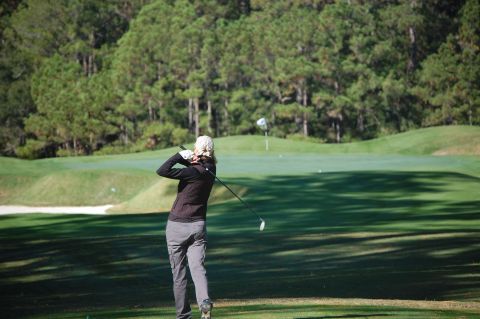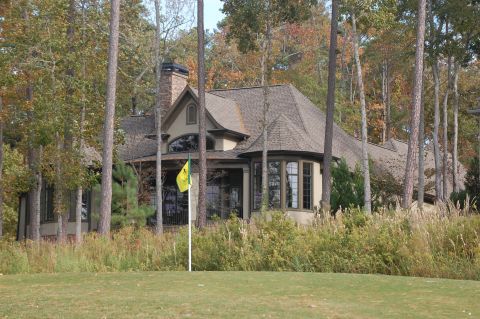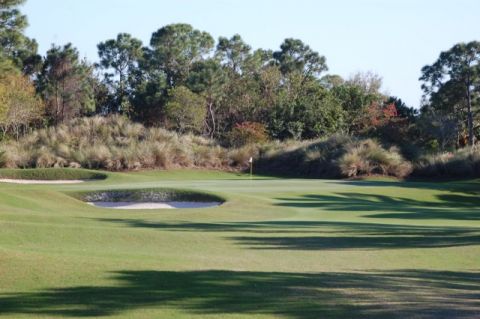During a recent-two week swing through South Carolina and Georgia, I was amazed at the responses by Realtors to my question, “How are sales going?” The consensus first part of the answers -– “We’re up over last year quite nicely” – made sense to me, but the follow-on from more than a few of my contacts was a bit perplexing: “Buyers tell us they are waiting to see how the election turns out before they commit.”
With most economists calculating before the election that the economy was already rebounding, and employment, the linchpin to overall economic good times, poised to improve, it struck me as odd that folks
"...it's clear that the excess inventory from the boom years has largely been used up..."
might be deferring their relocation plans based on who would win the election. No matter the President, the impact of politics on the economy rests more with the Congress, and a President Romney would have faced a split Congress, as does President Obama. A compromise to avoid the so-called “fiscal cliff” will be the first test of whether our politicians will derail the momentum.
The day before the election, without any clear sense of who would win, Local Market Monitor President and respected economist Ingo Winzer indicated that the economy is already in motion, and housing will hold the key to further momentum. He wrote:
“The major element we'll see more of in the next year is construction. Our Housing Demand Index is hovering just above zero -- after 5 years in negative territory; home prices have bottomed out in more than half of the 315 local markets we cover; and home vacancy rates have fallen from an historically high 3 percent in 2008 to just under 2 percent now. This doesn't mean we're on the brink of another boom, but it's clear that the excess inventory from the boom years has largely been used up (except in Florida).”
Given the vagaries of the stock market and the paltry interest rates on “safe” investments, real estate still looks like one of the better areas to park some money -– especially if the home you buy is doing double duty as shelter and, even more especially, if it gets you to your dream of a warm-climate retirement in a golf community. Never forget also, especially if you live in a high-cost area, that one of the best returns you can generate is to move to an area with a significantly lower cost of living. If you would like to discuss how to do that and consider some lower cost lifestyles in high-quality golf communities, please contact me.
*
Speaking of the election, we have taken a quick look at the results for the 2012 election, and below is a snapshot of how folks voted in the counties in which some of our favorite golf communities are located. Note, of course, that the county results may, or may not, reflect how voters living in the golf communities voted. [In the September edition of our free Home On The Course newsletter we published a breakdown of the 2008 Presidential election results in counties surrounding some of our favorite golf communities in the southeast. You can read that issue by clicking here.]
In North Carolina, New Hanover County, home to Wilmington and the ocean-side community of Landfall, with 45 holes of golf by Nicklaus and Dye, Romney garnered 51.7% of the vote to Obama’s 47.1%. Immediately south of Wilmington, in Brunswick County, where Brunswick Forest, St. James Plantation and Ocean Ridge Plantation are located, Romney outpolled Obama by a 60.7% to 38.5% margin. Voters in Buncombe, which surrounds Asheville, and Craven County, where New Bern’s Carolina Colours is located, gave Romney comfortable nods of 55.5% and 58.5%, respectively. Only in Orange County, the location of Chapel Hill, University of North Carolina, Duke University and the fine community Governors Club, with a 27-hole Jack Nicklaus Signature layout, did Obama win overwhelmingly, with more than 70% of the vote.


In Georgia, residents of Chatham County, home to The Landings at Skidaway Island (top), cast 55.5% of their votes for President Obama. In the more rural Greene County, where Reynolds Plantation is located, residents went for Mitt Romney 61% to the President's 38.4%. For those who needed a pleasant distraction post-election, the two communities combined offer 12 1/2 excellent 18-hole golf courses.
Not surprisingly, Obama did well in other university-dominated counties, such as Albemarle in Virginia, where the University of Virginia is located in Charlottesville. There, Obama notched a 55.3% to 43.3% win while squeaking out a smaller margin -– 50.7% to 48.0% -- in Nelson County, west of Charlottesville and home to the sprawling Wintergreen Resort (45 holes of golf by Rees Jones and Dan Maples). In New Kent County, between Richmond and Williamsburg and where the unique Viniterra golf community is located (Rees Jones), Romney won comfortably with 66.2% of the vote.
Romney swept Georgia easily, but Obama actually won the vote in Chatham County, which comprises Savannah and the 4,800-acre Landings on Skidaway Island, home to six golf courses and nearly 8,000 residents. Greene County, where the large Reynolds Plantation is located –- it features six and a half golf courses -– was more representative of the state, with Romney winning 61% to 38.4%.
South Carolina also went for Romney by a significant margin, with one of Obama’s only county victories coming from Charleston, where the golf communities in the Mt. Pleasant area (RiverTowne, Charleston National, Dunes West, Wild Dunes) and on Daniel Island are located. There, Obama won 50.4% of the vote to Romney’s 48.0%. In the counties that host Greenville area golf developments like The Cliffs Communities' Valley and Greenville Country Club, in the vast number of communities in Myrtle Beach and those in Aiken, Romney’s totals were above 60%. The tally was only a little closer in Beaufort County, which includes Bluffton, just off Hilton Head Island and comprises the upscale Colleton River, Berkeley Hall and Belfair golf communities, where Romney earned 58.2% of the vote. Romney won as well in Georgetown County, home of DeBordieu Colony, Pawleys Plantation and other Pawleys Island golf communities, but by a smaller 53.4% to 45.7% margin.
The Naples, FL, area (Collier County) went overwhelmingly for Romney (64.7%) while it was a little tighter in Sarasota’s Manatee County, with Romney taking 55.8% of the vote. And although Obama did well in the northeast, Delaware’s Sussex County, which comprises a nice range of golf communities in the Rehoboth Beach area, went for Romney 55.9% to 42.9%.
Properties currently for sale in most of the aforementioned golf communities are posted at GolfHomesListed, our companion site.


























